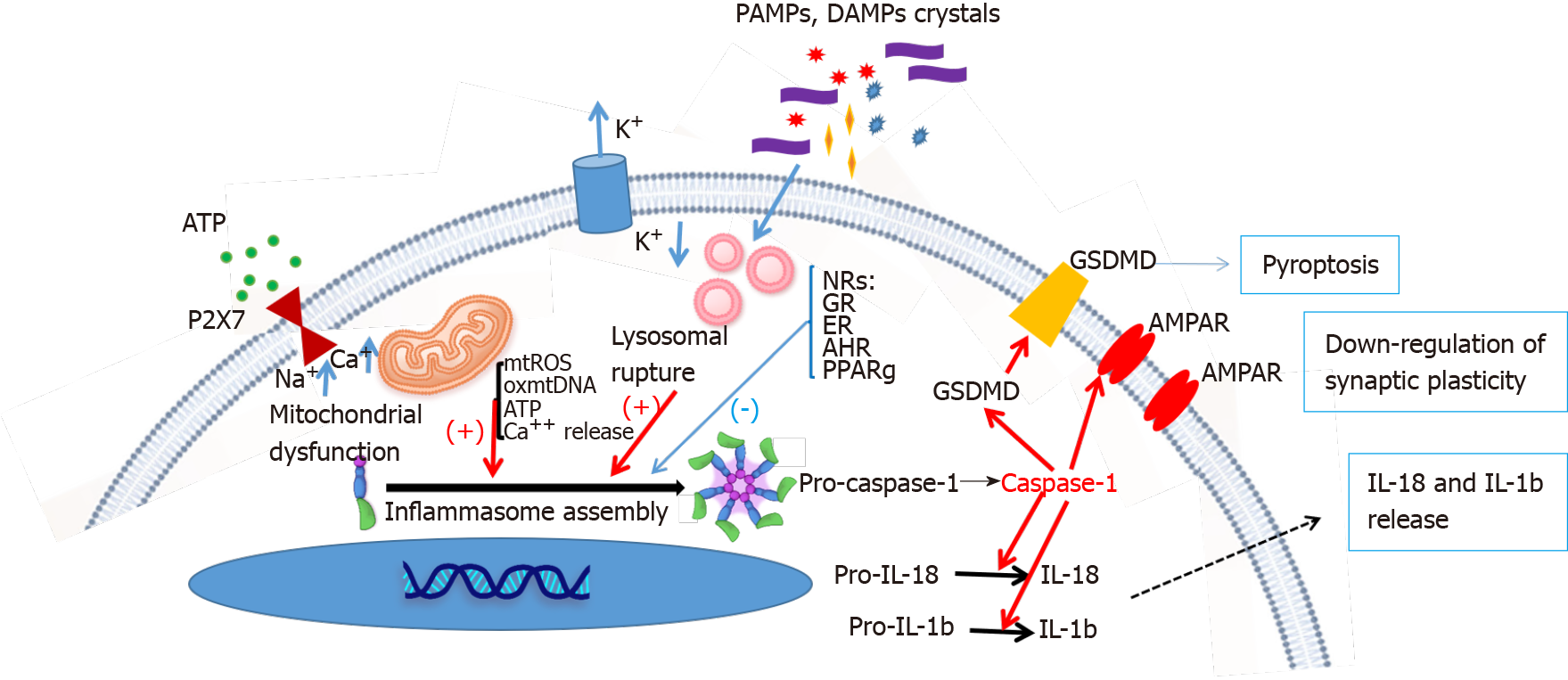Copyright
©The Author(s) 2021.
World J Psychiatr. Dec 19, 2021; 11(12): 1191-1205
Published online Dec 19, 2021. doi: 10.5498/wjp.v11.i12.1191
Published online Dec 19, 2021. doi: 10.5498/wjp.v11.i12.1191
Figure 1 Inflammasome activation in the pathophysiology of major depressive disorder - roles of the nuclear receptors.
NLRP3 inflammasome activation, which includes canonical and noncanonical activation pathways, is induced by a number of pathogen-associated molecular patterns and danger signaling molecules patterns. The canonical activation pathway involves stimulation-mediated activation signals such as ion fluxes, lysosomal rupture, mitochondrial dysfunction, and so on. Mitochondrial dysfunction leads to the production of mitochondrial reactive oxygen species, damaged mitochondrial DNA, and calcium release from the mitochondria, and all these changes facilitate the assembly of inflammasomes. Activation of the inflammasome causes caspase-1 activation, leading to the maturation and release of interleukin (IL)-1/IL-18 and pyroptosis. In addition, caspase-1 modulates the membrane stability of alpha-amino-3-hydroxy-5-methyl-4-isoxazolepropionic acid (AMPA) receptors, which leads to the down-regulation of AMPA receptors at the synapses. Nuclear receptors inhibit the assembly of NLRP3 inflammasome, which will finally protect the excitatory AMPA receptor synaptic activity and contribute to the antidepressant mechanism of the nuclear receptor activators. ROS: Reactive oxygen species; PAMPS: Pathogen-associated molecular patterns; DAMPS: Danger associated molecular patterns; GSDMD: Gasdermin D; AMPAR: alpha-amino-3-hydroxy-5-methyl-4-isoxazolepropionic acid receptor; IL: Interleukin; NRs: Nuclear receptors; GR: Glucocorticoid receptor; ER: Estrogen receptor; AHR: Aryl hydrocarbon receptor; PPAR: Peroxisome proliferator-activated receptor; ATP: Adenosine triphosphate.
- Citation: Wang H, Kan WJ, Feng Y, Feng L, Yang Y, Chen P, Xu JJ, Si TM, Zhang L, Wang G, Du J. Nuclear receptors modulate inflammasomes in the pathophysiology and treatment of major depressive disorder. World J Psychiatr 2021; 11(12): 1191-1205
- URL: https://www.wjgnet.com/2220-3206/full/v11/i12/1191.htm
- DOI: https://dx.doi.org/10.5498/wjp.v11.i12.1191









